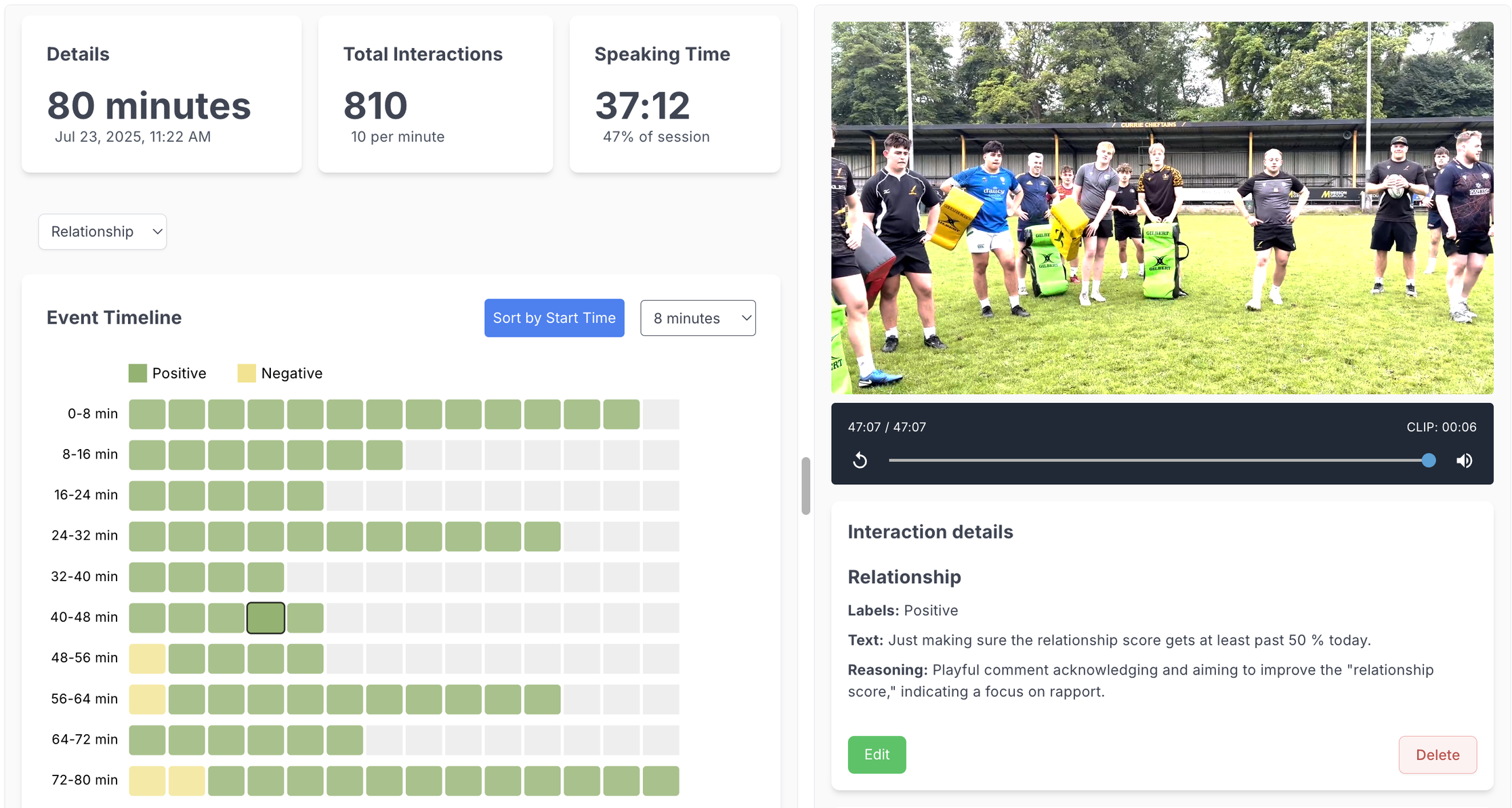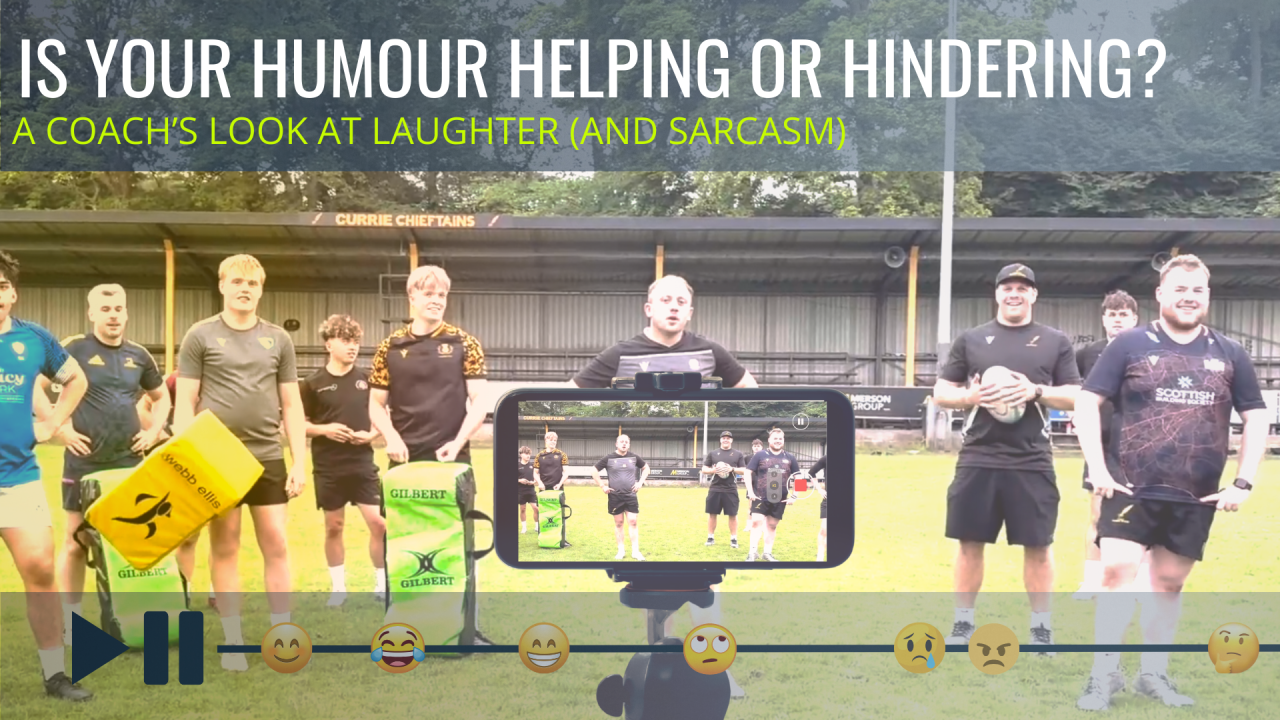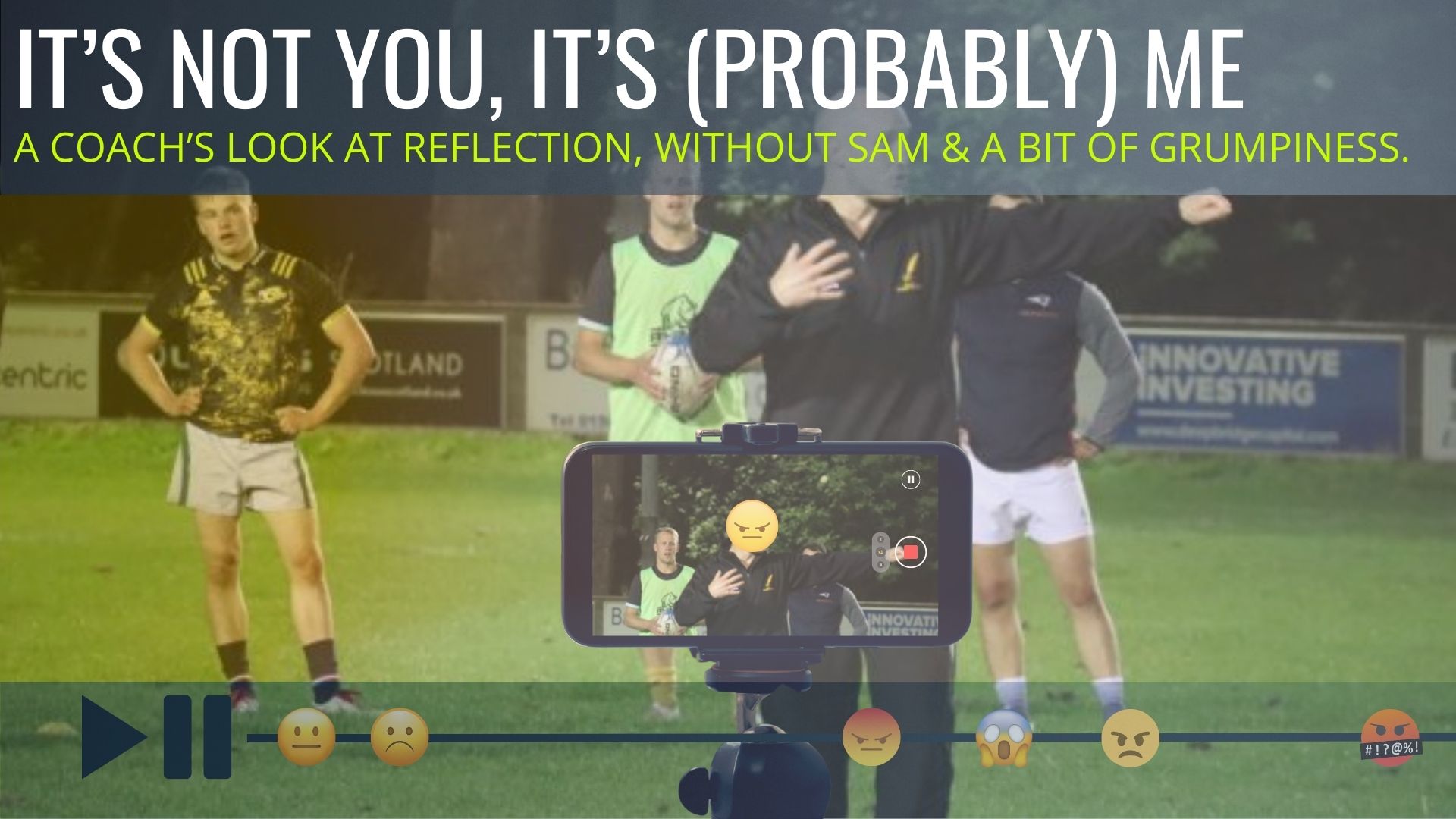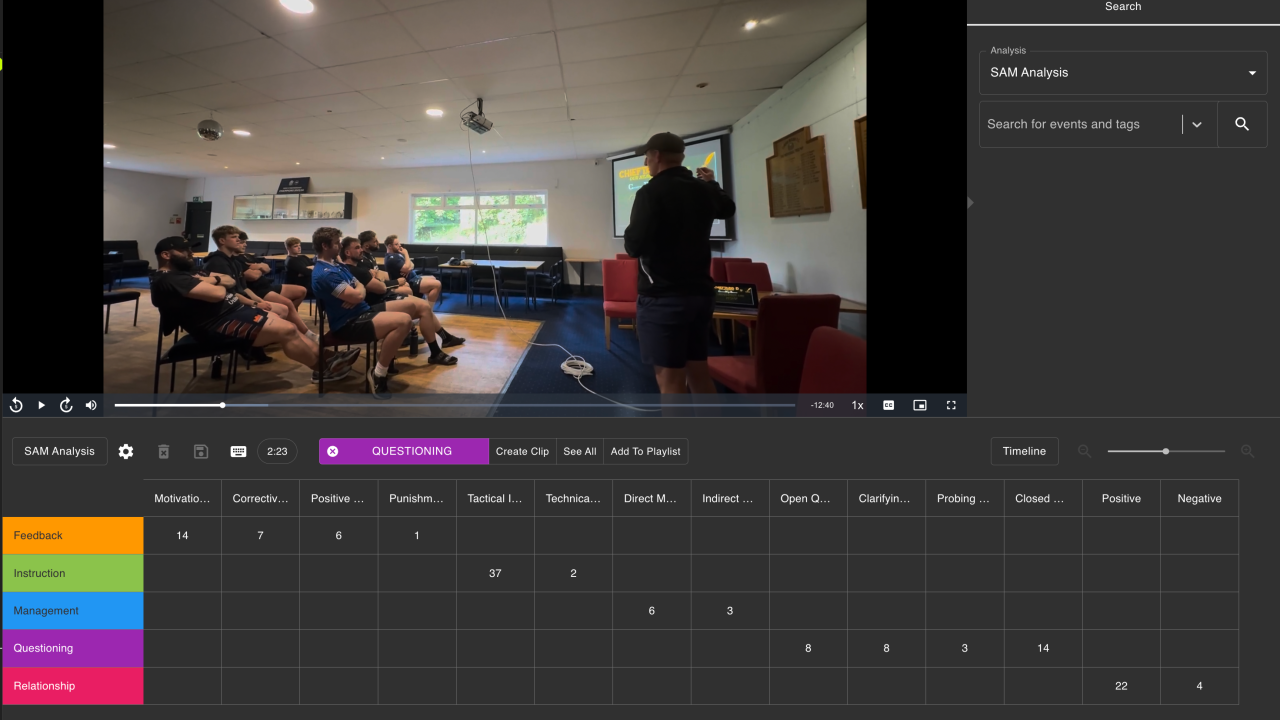Is Your Humour Helping or Hindering?
A coach’s look at laughter (and sarcasm)
We all want to be better coaches. We’ll spend hours reviewing game footage, tweaking session plans, and learning new drills. But how often do we step back and look at the less tangible stuff; the way we talk, connect, and even joke with our players?
I had this realisation recently while reviewing my own sessions with SAM (Session Analysis Model). SAM flagged something I hadn’t paid much attention to: I was using a lot of humour… and, if I’m honest, a fair chunk of sarcasm.
At first, I thought, Well, that’s just me being me. But the more I looked, the more I started asking myself: Is my humour intentional? Does it help my players? Or could it sometimes be getting in the way?
I spoke to a few trusted coaching peers about it, and they hit me with three brilliant questions:
- What’s the purpose of it?
- Is it intentional?
- Does it support your session delivery?
- Does it support your players?
Those questions stuck with me. Around the same time, I caught up with Dr. Edward Hall; someone I’ve been lucky to know for a while and I've spent some more time with since developing SAM. Ed pointed me towards some fascinating research on humour in coaching from Ronglan & Aggerholm (2014), Edwards & Jones (2018) and Edwards & Potrac (2024). That was the moment things really started clicking.
The double-edged sword of humour
The research shows humour can unite a team, cut tension, and make hard work enjoyable. But it can also exclude, undermine, or reinforce unhelpful power dynamics.
In particular, two types stood out:
- Inclusionary putdowns – gentle ribbing or shared jokes that make people feel part of the group.
- Disciplinary humour – using wit to set standards, correct behaviour, or make a point without direct confrontation.
Both can work… if you read the room and know your players well.
When humour brings people in
Inclusionary humour is a powerful “social glue.” It relies on shared history and trust, so the comment is received as playful, not personal.
One example from the research: a coach teased his ex-pro player after he gave the ball away — “The pros aren’t what they used to be, lads.” Everyone laughed, and it actually reaffirmed the player’s status in the group.
In my own coaching, I’ve learned the value of putting myself in the firing line. Sometimes I’ll use humour against myself, just to show I don’t take myself too seriously. It’s humbling, humanising, and, when balanced with plenty of positive reinforcement, helps serious feedback land better later.
When humour sets the standard
Then there’s disciplinary humour — those moments when you need to nudge standards without going full hairdryer.
Last week at training, I had a perfect example. One of my players had skipped Tuesday’s session to drop his girlfriend at the airport. The airport’s 20 minutes away, with great bus and tram links, so as excuses go, it was… on the 'tough one to process' end of the spectrum!
I didn’t want to go hard at him; we’re an amateur team, and I respect the commitment the players already make. But I also needed to make a point about communication and priorities.
So, in the opening huddle, I said:
“...if you can’t make training, let us know so we can plan. And make sure it’s a good reason; dropping your girlfriend at an airport 20 minutes away with great public transport probably isn’t...”
The guys laughed, the player grinned, and the message landed. That’s the sweet spot: holding standards while keeping the atmosphere positive.
When humour goes wrong
Humour’s not always harmless. In fact, overuse or poor timing can do real damage:
- Deflecting instead of engaging: I’ve caught myself using humour when a player raised a genuine concern. Instead of addressing it properly, I brushed it off with sarcasm. At the time it felt like banter, but looking back it shut them down and missed the chance to actually support them.
- Masking frustration: Coaches (me included) sometimes use a sharp joke instead of admitting frustration. A sarcastic “Nice one, lads” after a poor drill might feel like a release, but it often lands as criticism without clarity.
- Overdoing it: Too much joking can create a “class clown” environment where players stop taking things seriously. One coach in the research leaned so heavily on humour that his players struggled to tell when he was being serious. The result? Standards slipped.
How SAM keeps me honest
SAM doesn’t judge whether my humour is “good” or “bad” — it just shows me what’s happening. It automatically analyses the session, tagging moments under categories like:
- Management (direct or indirect instructions)
- Instruction (technical or tactical)
- Feedback (positive, corrective, motivational, punishment)
- Questioning (open, closed, clarifying, probing)
- Relationships (positive or negative)
That sarcasm I thought was harmless? SAM logged it as a “negative relationship event.” Not because it was destructive, but because the tone might chip away at connection if it became my default.
Having that objective data helps me see patterns I’d miss in the moment. Over a season, I can track whether I’m using humour as I intend, or if it’s drifting.

Takeaways for coaches
From my own reflections and the research, here’s what I’d pass on:
- Know why you’re using humour: Is it to build connection, relieve pressure, make a point, or protect someone?
- Read the room: What lands with one player might sting another.
- Balance the ledger: Match “take-down” humour with plenty of genuine praise and motivation.
- Reflect and adjust: Whether it’s SAM, video, or just honest self-reflection, check in on how your humour is being received.
- Be ready to own it: If a joke doesn’t land, acknowledge it and turn it into a moment that gives you more insight or brings you closer to the players.
Humour’s not just an add-on to our coaching; it’s part of our performance. It can warm the team up, cut through tension, and make the hard work enjoyable. Or, if we’re careless, it can erode trust.
I’m not trying to become a stand-up comedian out there, but I am trying to be intentional. And with tools like SAM (and good people like Ed Hall keeping me curious), I can make sure my humour is helping my players… not hindering them.
▶️ How I use SAM




.jpg)

